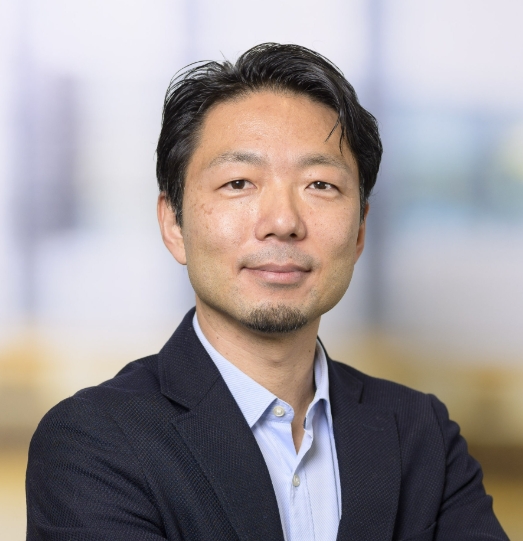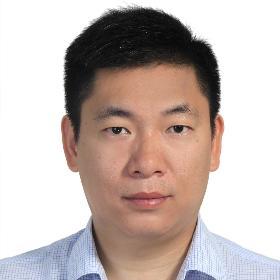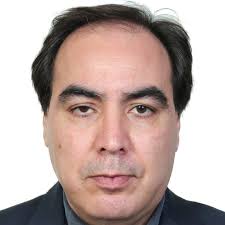2025 Keynote Speakers
Keynote Speaker Ⅰ

Prof. Atsushi Urakawa
Delft University of Technology, The Netherlands
Bio: Atsushi Urakawa obtained his BSc degree in Applied Chemistry at Kyushu University (Japan) with one year stay in the USA. He then moved to Europe and studied Chemical Engineering at TU Delft (The Netherlands) for his MSc degree and obtained his PhD in 2006 at ETH Zurich (Switzerland). He worked as Senior Scientist and Lecturer at ETH Zurich and in 2010 he joined ICIQ (Spain) as Group Leader. In 2019, he undertook a new challenge as Professor of Catalysis Engineering at TU Delft. Rational catalyst and catalytic process design is the goal of his research and his team develops tools and perform research towards that. He is elected Fellow of the Royal Society of Chemistry (2016) and the recipient of JSPS Prize (2020) and The Japan Academy Medal (2021).
Speech Title: Playing with thermodynamics and kinetics in CO2 conversion catalysis
Abstract: The amount of CO2 from the flue gas released by industrial processes and our activities is in the order of tens of gigatons globally. This enormous amount clearly points out that, besides actively demonstrated CO2 sequestration technologies, we need to urgently develop highly efficient CO2 conversion technologies to close the carbon cycle by recycling the carbon contained in CO2 into a usable form. One of the most promising paths to valorize a great amount of captured CO2 is its catalytic conversion to largely demanded chemicals like fuels. However, general challenges are its efficient activation and selective conversion to desired products. Numerous catalysts are developed to date; however, achieving high conversion efficiencies are often hindered by the high thermodynamic stability of CO2 as well as by the unfavored reaction kinetics and thermodynamics.
In this talk, chemical and engineering strategies for efficient catalytic conversion of CO2 to chemical energy carriers are presented. Impacts of high-pressure conditions in combination with innovative catalysts on creating highly reactive environment as well as the importance of operando studies will be presented for the synthesis of methanol, and CO among others. Furthermore, unique characteristics of unsteady-state operation to combine CO2 capture and conversion in one process to produce syngas and methane are explained, highlighting the importance of operando methodologies to rationally develop and optimize catalytic materials and processes.
Keynote Speaker Ⅱ

Prof. Shibin Yin
Guangxi University, China
Bio: Dr. Shibin Yin, Professor. His research focuses on fuel cells, hydrogen production via water/ammonia electrolysis, electrosynthesis of fine chemicals, chemical energy storage systems, and large-scale preparation and application of graphene. To date, he has published >170 papers in journals such as Energy & Environmental Science and Advanced Materials, authorized more than 20 national patents, 2 books, and led over 30 research projects, including the National Natural Science Foundation of China (NSFC).
Currently, he serves as Director of the Guangxi Key Laboratory of Electrochemical Energy Materials. He is also an editorial board member of Journal of Electrochemistry and Chinese Journal of Structural Chemistry, and a youth editorial board member of Acta Physico-Chimica Sinica. In addition, he is a member of the Chinese Chemical Society and the International Society of Electrochemistry, as well as a review expert for the NSFC and the Academic Degree Evaluation Center of the Ministry of Education. His honors include the Guangxi Graphene Series Standard Award and the First Prize of Guangxi Natural Science Award.
Speech Title: Selective Electrooxidation of 5-Hydroxymethylfurfural
Abstract: With the rising global energy demand and growing environmental concerns, the development and utilization of renewable, carbon-neutral biomass resources have become increasingly important. In this context, the electrochemical oxidation of 5-hydroxymethylfurfural (HMF) has attracted significant interest as a promising route for the sustainable production of high-value biomass-derived chemicals, particularly 2,5-furandicarboxylic acid (FDCA). However, the development of efficient catalysts for HMF conversion remains a challenge.
Thus, our research focuses on the development of nickel/cobalt composite catalysts with high activity, selectivity, and stability for the electrooxidation of HMF. By employing interfacial regulation strategies, we aim to optimize the geometric and electronic configurations of surface and interface active sites. Moreover, through systematic investigation of the influence of cooperative interface effects on electron–proton transfer, reactant adsorption/desorption, and the activation and cleavage of chemical bonds during the reaction, we elucidate the synergistic mechanism among different types of active sites in the reaction process. These works thereby establish a foundational strategy for significantly improving the catalytic performance of catalysts in the selective electrooxidation of HMF to FDCA.
Keynote Speaker Ⅲ

Prof. Ramin Yousefi
Islamic Azad University, Iran & BMF Science Group CO LTD, Germany
Bio: Ramin Yousefi is a Professor of Solid-State Physics at Islamic Azad University, Iran, with over 25 years of academic experience. In addition, he serves as Senior Consultant & Chair, Scientific Committee of BMF Science Group, Germany (a remote work). Born in 1972, Ramin Yousefi obtained his Ph.D. from the University of Malaya (UM), Malaysia (2007–2011). His research focuses on Nanotechnology, particularly on semiconductor nanocomposites for photocatalytic applications in water treatment and water splitting. He also explores the use of nanostructures for gas sensors and other advanced applications.
Throughout his career, Ramin Yousefi has published over 150 peer-reviewed papers in high-impact journals and contributed to several book chapters published by Elsevier, Wiley, and Springer. His research has received more than 10,000 citations, with a current h-index of 51 (based on Google Scholar). He has successfully supervised multiple Ph.D. and master's students, guiding their research in cutting-edge areas of nanotechnology. For five consecutive years (2021–2025), Ramin Yousefi has been recognized among the world's top 2% of scientists in the field of Applied Physics, based on data verified and published by Elsevier and Stanford University.
Speech Title: Nanoscale Semiconductor Heterostructures: From Basic Concepts to Photocatalytic Applications
Abstract: Semiconductor heterostructures represent one of the most versatile platforms in modern materials science, offering unique opportunities to manipulate charge carrier dynamics, tune band alignments, and enhance photocatalytic performance. This presentation introduces the fundamental principles of semiconductors, from band theory to carrier recombination, and highlights the central role of excitons and electron–hole pair lifetimes in determining material functionality. The discussion then focuses on heterostructure engineering, emphasizing type-I, type-II, and type-III band alignments, as well as advanced Z-scheme and step-scheme (S-scheme) heterojunctions. Special attention is given to the mechanisms of carrier transfer, thermodynamic challenges, and the advantages of solid-state and S-scheme systems in maximizing redox potential. Case studies from the presenter’s research group illustrate the practical implementation of these heterostructures, including Se/g-C₃N₄, CuSe–Cu₃Se₂/Ag-PANI, and SnSe/Ag-PANI nanocomposites, which exhibit remarkable performance in photocatalytic degradation of pollutants and antibiotics. Finally, the outlook addresses the rational design of heterostructures, the use of advanced characterization and modeling tools, and the exploration of novel hybrid materials for sustainable energy and environmental applications.